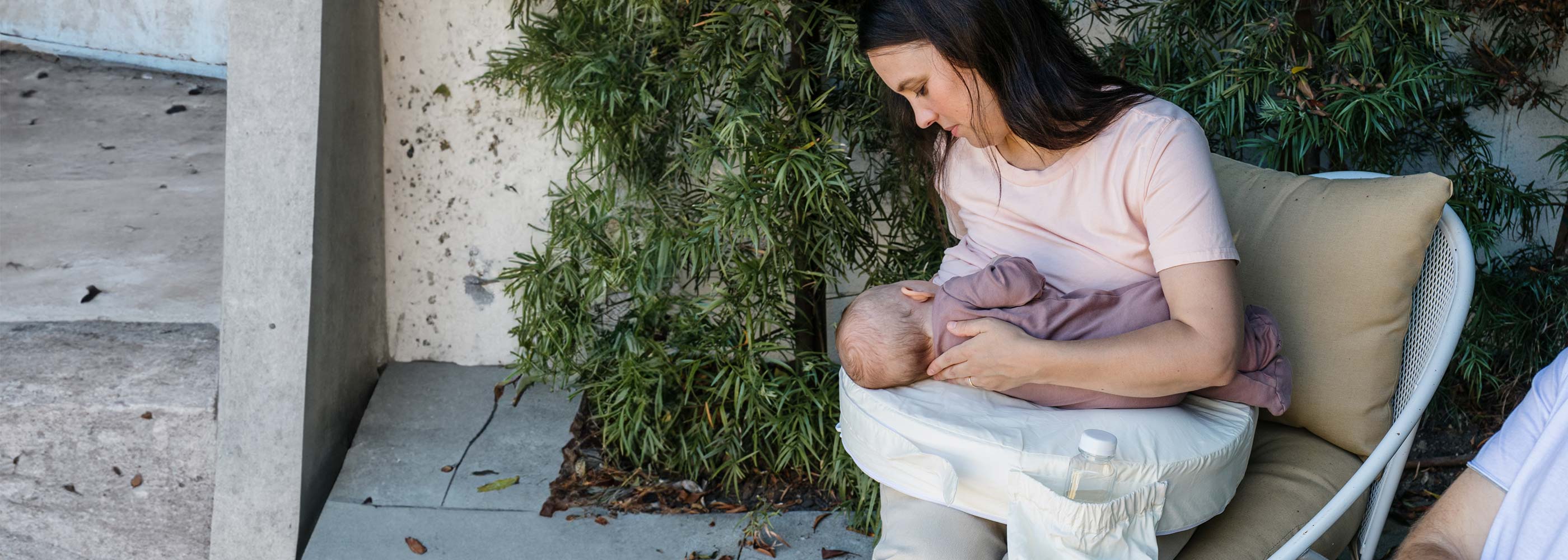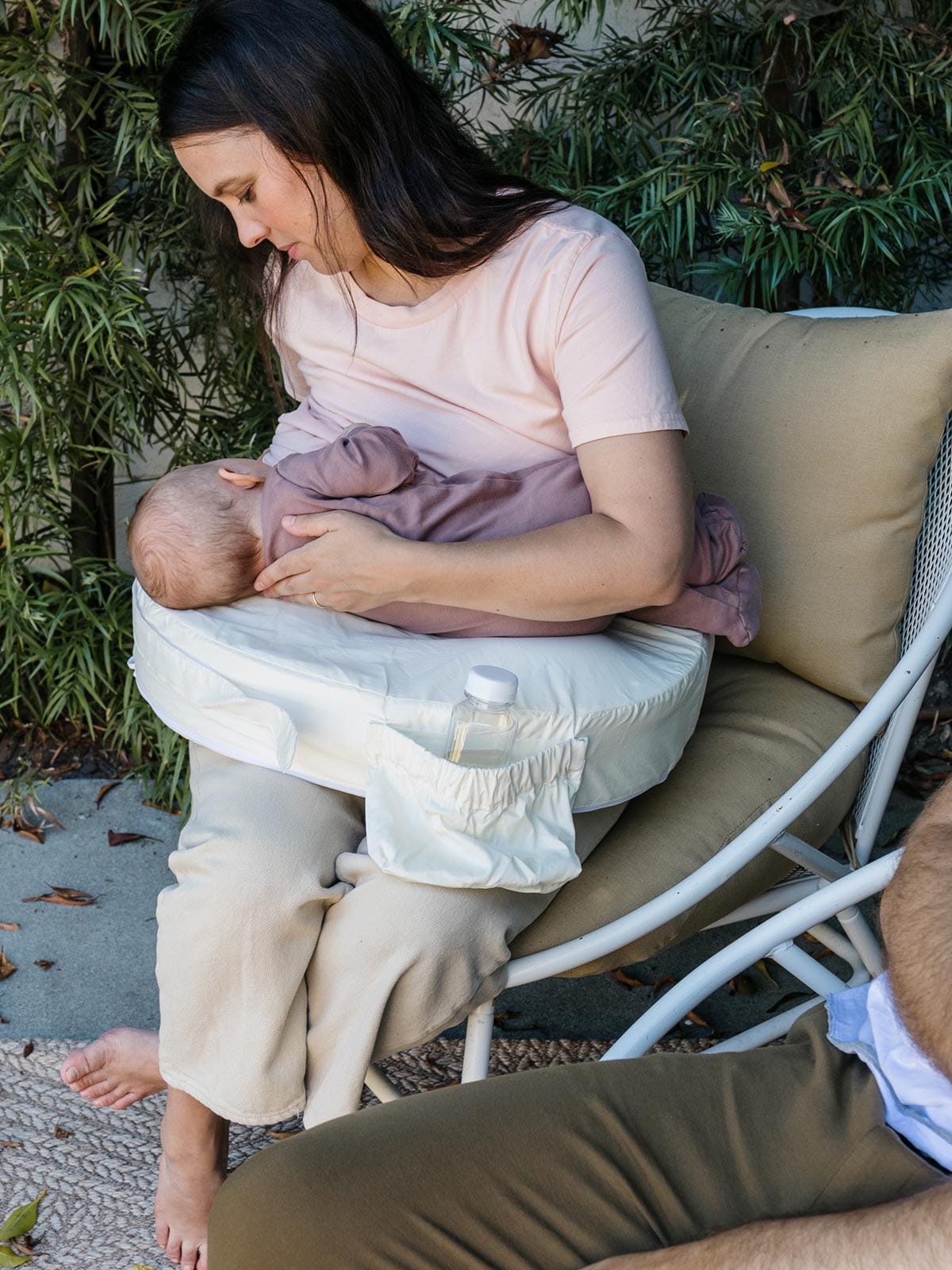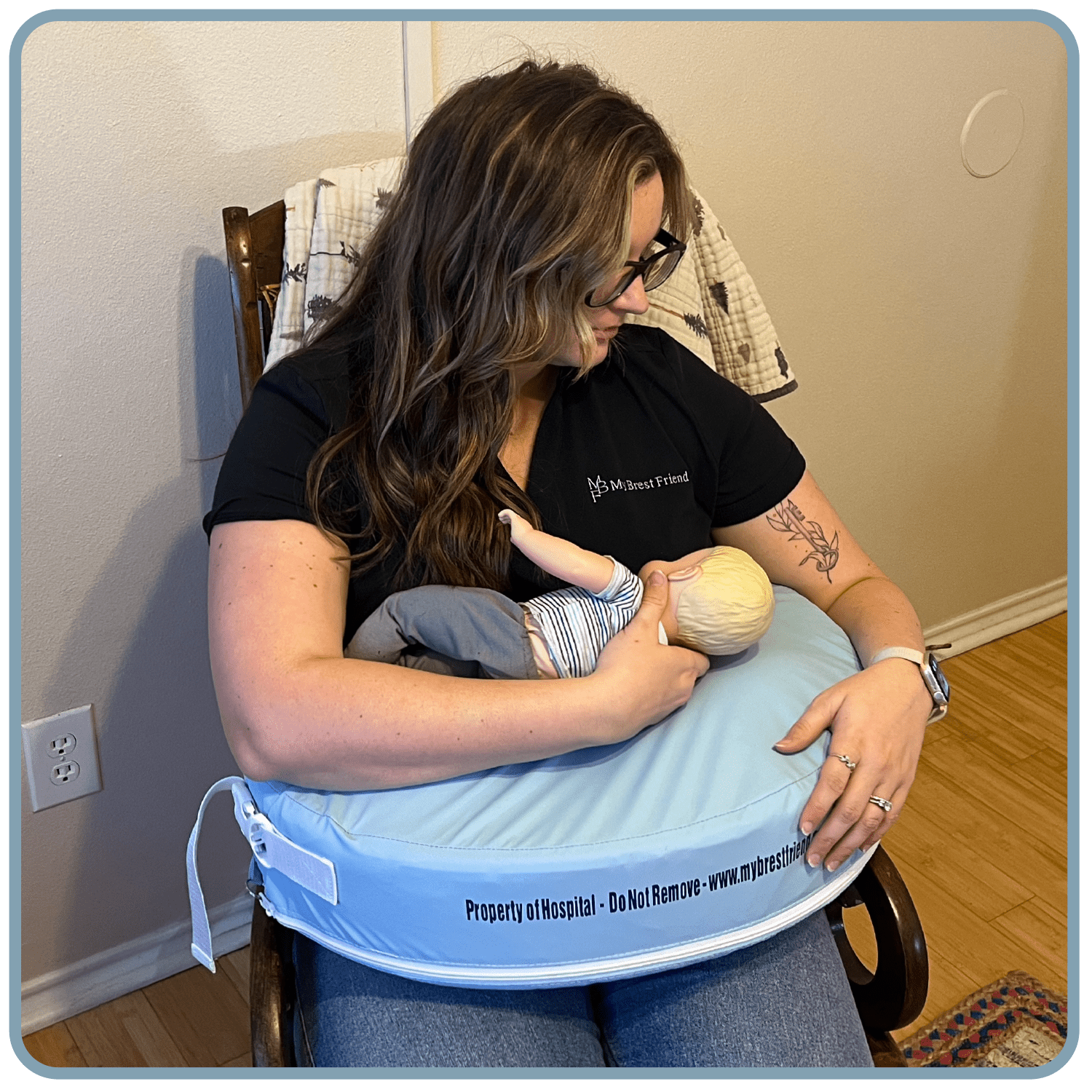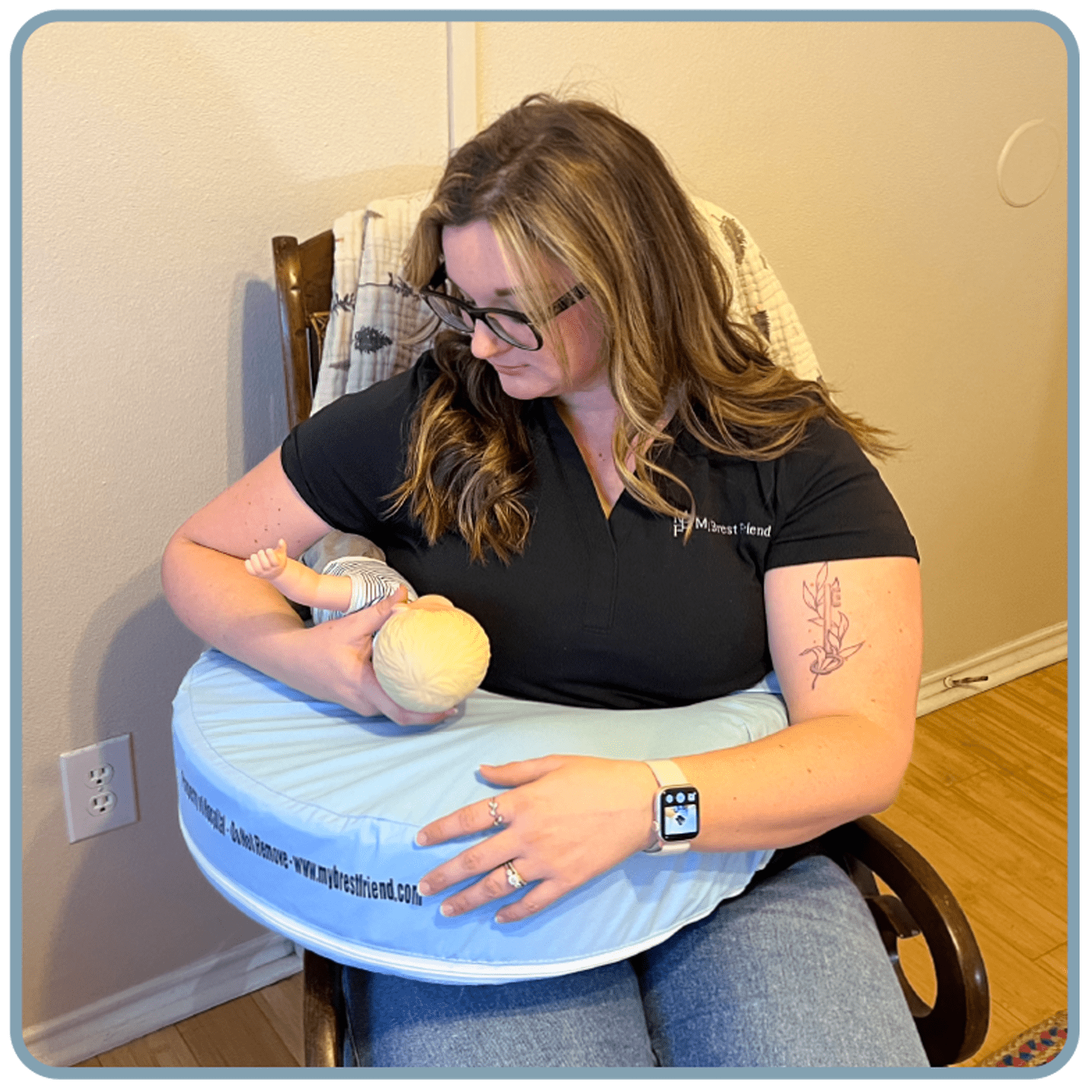BREASTFEEDING BENEFITS
The nutritional, physical and emotional benefits of breastfeeding have been proven to last a lifetime for both mother and child.
Financially breastfeeding saves money (no formula to purchase) and it helps the environment (no packages to waste).
Below we have answered some common breastfeeding questions as well as provided tips that may help a new mother.
WHY SHOULD I CONSIDER BREASTFEEDING?
There are many reasons women choose to breastfeed. Health benefits for breastfed babies include fewer ear infections, respiratory infections like pneumonia, childhood diabetes, meningitis, allergies, some childhood cancers and increased immune support.
The health benefits for the breastfeeding mother include lower risks of premenopausal breast cancer, osteoporosis, cervical cancer, returning to pre-pregnancy weight as well as a decrease in postpartum breastfeeding. Not to mention the financial benefits of not having to pay for formula, and the ecological benefits of no breast-milk packaging.
WHAT ARE THE HEALTH BENEFITS OF BREASTFEEDING?
- Breastfeeding protects babies from infections and illnesses that include diarrhea, ear infections and pneumonia.
- Breastfed babies are less likely to develop asthma.
- Children who are breastfed for six months are less likely to become obese.
- Breastfeeding also reduces the risk of sudden infant death syndrome (SIDS).
- Mothers who breastfeed have a decreased risk of breast and ovarian cancers.
DO MOST WOMEN BREASTFEED OR USE FORMULA?
Breastfeeding Report Card released in 2022 for 2019 states that 83.2% of mothers in the U.S start out breastfeeding their babies.
HOW LONG DO WOMEN TYPICALLY BREASTFEED?
CDC reports that at the end of six months, breastfeeding rates are 58.2%; with 25.4% exclusive. (Infants born in 2020).
WHAT’S THE RECOMMENDED DURATION FOR BREASTFEEDING?
The World Health Organisation (WHO) recommends breastfeeding for 2 years and the American Academy of Pediatrics (AAP) Recommends exclusive breastfeeding for 6 months followed by complementary foods for at least 2 years and beyond.
WHAT ARE THE ECONOMIC BENEFITS?
- Families who follow optimal breastfeeding practices typically SAVE between $1,200–$1,500 a year compared to families who use formula to feed their infants.
- A study published last year in the journal Pediatrics estimated that if 90% of U.S. families followed guidelines to breastfeed exclusively for six months, the U.S. would annually save $13 billion from reduced medical and other costs.
- For both employers and employees, better infant health means fewer health insurance claims, less employee time off to care for sick children, and higher productivity.
- Mutual of Omaha found that health care costs for newborns are three times lower for babies whose mothers participate in the company’s employee maternity and lactation program.
WHAT ARE THE CHALLENGES OF BREASTFEEDING?
Some women experience challenges when first learning to breastfeed. It is not uncommon for women to experience tender nipples and supply concerns in the first few weeks after a baby is born. New moms often also feel tired, overwhelmed and unsure if things are going as they should.
WHAT CAN I DO TO PREPARE FOR BREASTFEEDING?
Attending a prenatal breastfeeding class can be helpful in preparing couples for the breastfeeding experience.
Topics usually include how milk is produced, recommendations for positioning, how to properly latch your baby, hand expression, colostrum production, collection and more. Consider booking an appointment with a lactation consultant to help you prepare for your breastfeeding journey.
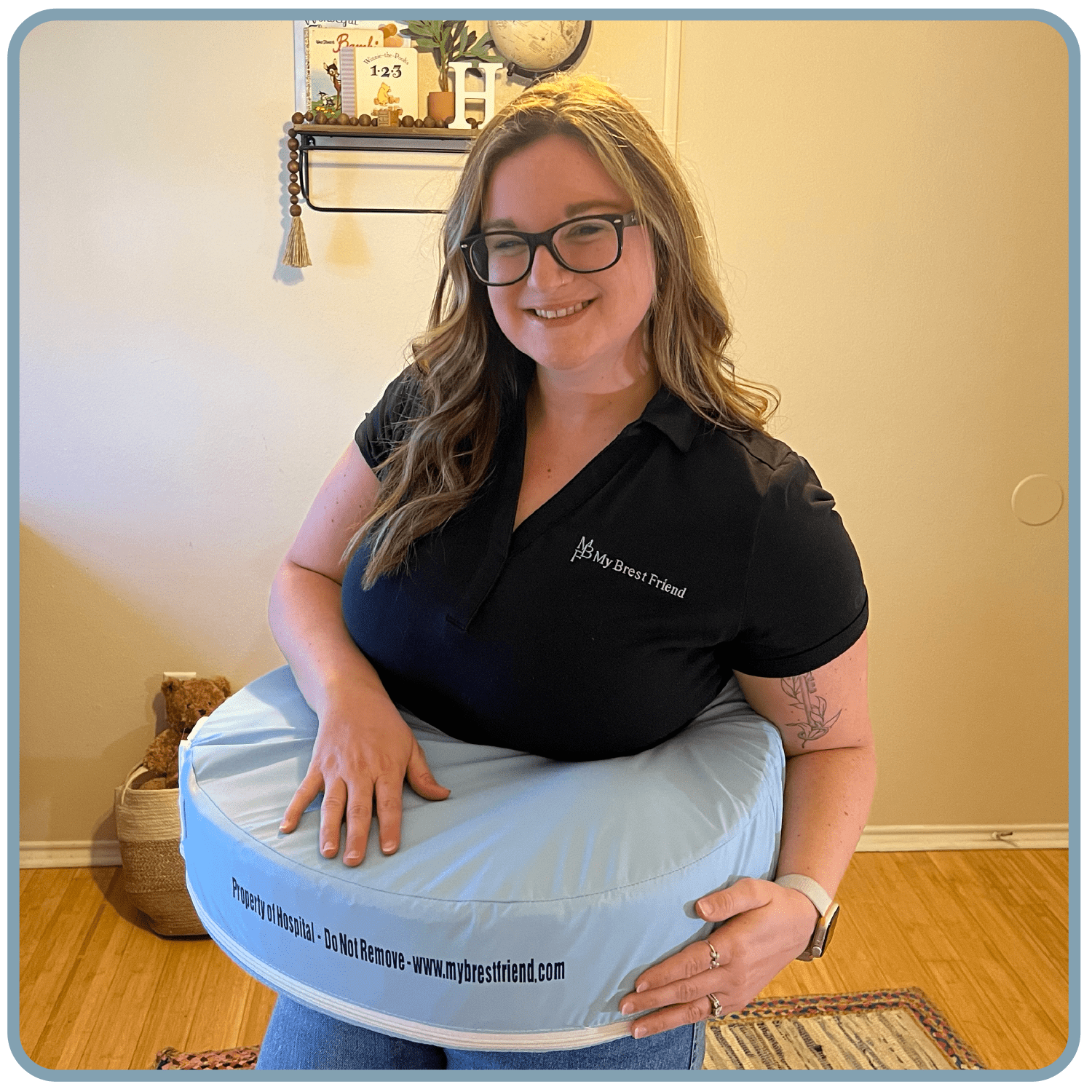
One could opt to watch a breastfeeding movie such as “Simply Breastfeeding” by Shari Criso or read a recommended book to dispel fears and myths you may have heard about breastfeeding. Finally, talk to friends who have successfully breastfed so you have a support group to count on if you encounter challenges breastfeeding. Shop for items many women find helpful: Breast pump, correct flange sizes, breastfeeding chair and stool, My Brest Friend nursing pillow, 2-3 breastfeeding bras and camisole, bra pads ( washable cotton), nipple cream or lanolin (for sore nipples), My Brest Friend travel nursing pillow (inflatable for on-the-go), and a breastfeeding shawl or cover up.
HOW DO I GET STARTED ONCE THE BABY IS HERE?
STEP ONE
Find a comfortable position to breastfeed. For many women, sitting upright in a straight-backed chair with their feet up on a stool and a breastfeeding pillow, like My Brest Friend, works well. It will help to un-wrap your baby from any blankets and undo your shirt and bra, allowing your baby to feed skin-to-skin at every feeding.
STEP TWO
The most common breastfeeding position is called the cross-cradle hold and football hold. To feed on your right side in cross cradle position, support your right breast with your right hand. Place your thumb and index fingers forming a “U” under your breast, and compress your fingers together to make your breast into a “sandwich” for your baby’s mouth.
STEP THREE
Place your baby on the My Brest Friend pillow and cradle him with your left arm, on his side. Your left hand should support his shoulders and the base of his head, with your index finger and thumb placed behind the baby's ears. Utilize the bumps on the MBF pillow to support the baby's head/your wrist.
STEP FOUR
Align your right nipple with your baby’s nose and slightly tip the baby’s head back, bringing his chin towards your breast. Stimulate him to open his mouth wide by rubbing your nipple on his upper lip.
STEP FIVE
Once your baby opens his mouth wide, use your left hand to bring his chin first to your breast. After latching, lips should be flanged, chin touching breasts, with a gentle pull on the breast. Look for ear wiggles and listen for swallows. If the latch is painful, unlatch and try again, aiming for the deep latch with the nipple stimulating the palate of the baby's mouth. Continue to support your breast until the baby is breastfeeding well.
HOW WILL I KNOW WHEN MY BABY IS HUNGRY?
Most newborns breastfeed about every 2-3 hours, which is 8-12 times in 24 hours! Aim to feed with hunger cues instead of the clock, as breastmilk is easy for babies to digest and a newborn’s stomach is only the size of a walnut, small frequent meals are a necessity.
Most health care providers recommend waking a baby to feed every 2-3 hours if the baby is less than 2 weeks old or is not yet back to birth weight, never going past 4 hours. Once a baby returns to his birth weight after the typical 5-10% weight loss in the first few days, parents are encouraged to allow their baby to sleep 4-5 hours (if the baby will do so!) before waking for a nighttime feed.
It is helpful to respond to a baby’s early signs of hunger rather than waiting for the late sign of hunger, which is crying. It is much easier to latch a baby who isn’t frantically hungry! Early signs of hunger include: the baby opens his mouth and turns his head to the side in search of the nipple (called the rooting reflex), sucking and licking motions, tense, clenched fists and leg movements such as “bicycle riding.” Crying is a late hunger sign, the infant should attempt to latch prior assisting him with a calm latching effort.
HOW LONG SHOULD A BREASTFEEDING SESSION LAST?
For most new mothers, a breastfeeding session will usually last 45 minutes, including time spent feeding, burping and changing. A typical newborn will nurse 15-20 minutes on the first side. Some lactation professionals believe the mother should then return the baby to the same breast to help completely drain the first breast while others believe you should offer both breasts at every feed. Experiment to see what works for you and for your baby. Allow your baby to breastfeed for another 10-15 minutes until he is drowsy and full, and then burp him at the end of the feeding.
HOW DO I KNOW IF MY BABY IS GETTING ENOUGH TO EAT?
There are several concrete ways to determine if your baby is eating well. First, Pediatric health care providers will be monitoring your baby’s weight frequently in the first few weeks to ensure good weight gain. The goal is for a newborn to regain his birth weight by 2 weeks of age and then gain 0.7-11 ounces per day or 5-8 ounces a week for the first 12 weeks of life. After 12 weeks of age, babies slow down their growth and gain 1/2 ounce per day or about 3 to 6 ounces per week. Therefore, if your baby is gaining appropriately, you are feeding your baby enough.
Second, what goes in must come out! Watching your baby’s output can help you see how well he is doing, especially in the first few weeks as it shows the baby's hydration status. If you see an appropriate number of diapers for your baby, you can usually count on a good weight gain.
The usual expectation for wet diapers with a newborn is:
• 1 day old, 1 wet diaper, 1 stool (meconium)
• 2 days old, 2 wet diapers
• 3 days old, 3 wet diapers
• 4 days old, 4 wet diapers; 3 transitional stools (brown/green)
• 5 days old, 5 wet diapers
• From 6 days old and onward, expect 6-8 wet diapers a day with 3-4 yellow seedy stools.
For stools, you should see the progression from the black, tarry meconium in the first few days to brown transitional stools, to green stools to yellow seedy stools by day 5 of life. Stools remain yellow until you start solid foods around six months.
Thirdly, most women can notice the difference in their breasts before and after a feeding. Breasts should feel full before a feeding and much softer after a feeding if a baby has had a good breastfeed.
Lastly, watch your baby feed, listen to the soft breathy sounds of swallows and observe the classic “drunken baby” look after a great feed. A full, satisfied baby is a wonderful sight.
If you have any concerns about how your baby is doing, be sure to contact your paediatric health care provider, or lactation consultant.

HOW CAN I MANAGE PUMPING & STORING MILK?
Freshly pumped milk can safely stay at room temperature for about 4 hours. If the milk has been chilled in the fridge or freezer, do not leave it out for more than 1 hour. It can be stored in the refrigerator for 3-5 days, in the back of the refrigerator. Most milk will only last 72 hours in a refrigerator that is opened and closed frequently. Smell the milk before offering, since spoiled breast milk will smell like sour cow’s milk and should be discarded, or saved for milk bath. Breast milk can be stored in the freezer for 3-6 months, depending on your freezer. In a deep freeze, it is safe for one year.
WHAT SHOULD I DO TO CARE FOR MYSELF AS I CARE FOR MY BABY?
Set up a breastfeeding station in your home that includes a supportive chair, breastfeeding footstool, glass of water, and My Brest Friend Nursing Pillow.
My Brest Friend’s patented, wrap-around design has unique features that most completely address the needs of both mom and baby during breastfeeding. Developed in a laboratory of new moms, babies, and breastfeeding experts, it helps establish and maintain latch on, provides the best possible support for baby, eliminates strain on mom’s body, and creates a secure, comfortable breastfeeding experience so mom and baby can peacefully connect, which in turn allows a relaxed mother, and greater milk flow.
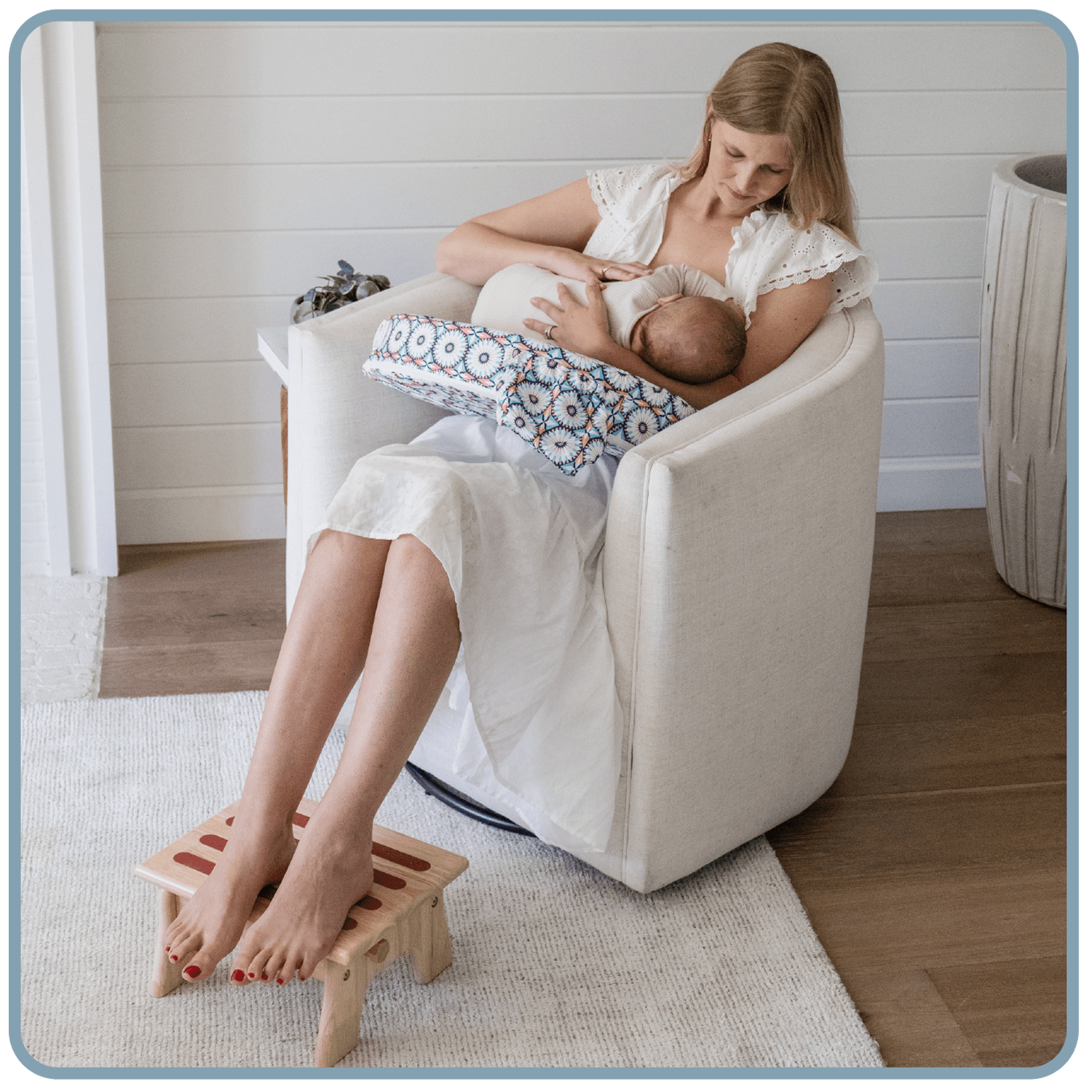
My Brest Friend has fans in over 30 countries where it is sold, as well as in hundreds of NICU’s, birthing hospitals and lactation consultant offices where it is used. It is the #1 choice of lactation consultants, and consistently earns raves among breastfeeding mothers, many of whom say My Brest Friend has helped them achieve longer holding and feeding cycles with their babies. The stylish new prints and fabrics have also made My Brest Friend the perfect item to register for or give as a gift.
Resource from the Offce of the Surgeon General, CDC.

